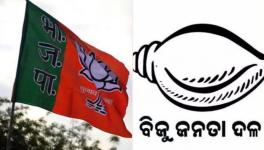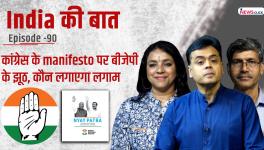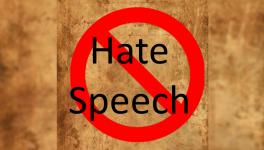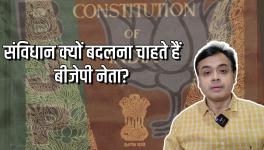Hindutva Thought Circuit on Muslims And How To Challenge It
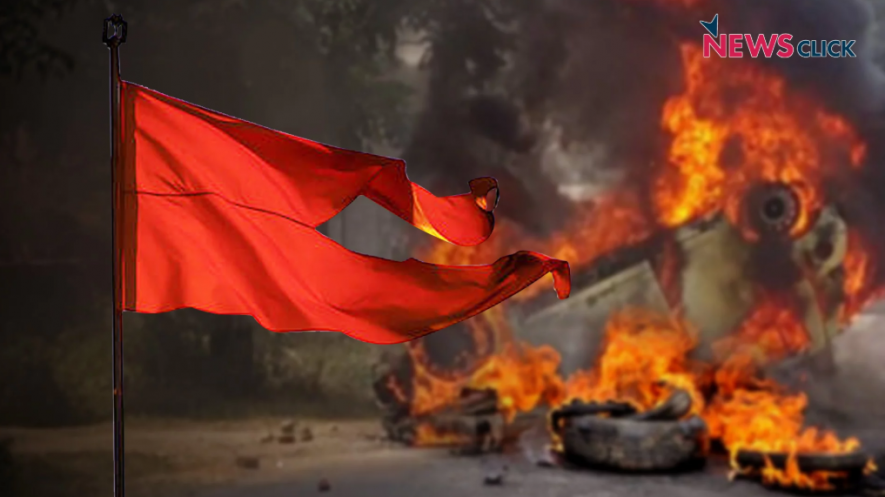
Even the gravity of the Covid-19 pandemic has not prevented fonts of Hindutva from a continued dehumanising of Muslims. The few scores of predominantly Muslim women protesting at Shaheen Bagh have been presented as somehow constituting a pivotal threat to the health of a country of 1.3 billion. The continued obsession, the unceasing scapegoating, compels a search for patterns. We might ask: how does the logic of Hindutva thinking on Muslims flow? Also, what might be the implications of such a logic?
Below is one logic flow, or thought circuit, of Hindutva thinking on Muslims.
Step 1. “Muslims. Why do they always think of their community first—asserting their Muslimness all the time? Citizenship for them, education for them, jobs for them, burkha, skull cap, talaq. What’s their problem? They need to stop thinking of themselves as Muslims, and start thinking of themselves as Indians.”
Step 2. “They should be like APJ Abdul Kalam. With him, you couldn’t even tell that he was a Muslim.”
Step 3. “There might be some such exceptions, but one can tell, one knows that Muslims are always conspiring. You know why they walk around on the street late at night? They are planning anti-national activities.”
Step 4. “I may never have visited a Muslim home. I may also not have Muslim friends. But I know how they are. I wouldn’t even want to visit their homes.”
Step 5. “Their homes in any case are filthy. They smell. They work in slaughterhouses. They are all poor, uneducated, half-employed, puncture tyre repair types.”
Step 6. “They have been pampered, appeased, for 70 years. Every government has given them lollipops.”
Step 7. “This pampering has made them ghettoise. But why do they have to ghettoise? Why can’t they enter mainstream society?”
Step 8. “It’s totally understandable that someone wouldn’t want to rent their flat to a Muslim. Would you want the smell of beef coming out of your house, or your neighbour’s house if you are a vegetarian? On some things, especially religious matters, there can’t be a compromise.”
Step 9. “National security also cannot be compromised. It is a fact: All Muslims are not terrorists, but all terrorists are Muslims.”
Step 10. “Why can’t Muslims reclaim their identity from terrorists? They need to take charge of their community, take the responsibility of stopping the extremism. That’s the first thing they need to do.”
Step 11. “Muslims. Why do they always think of their community issues first…” —and we’re back to Step 1, the circuit keeps repeating, on and on.
Depending on the issue at hand—Covid-19, the Citizenship Amendment Act, secularism, Kashmir, the Ram temple-Babri mosque dispute—the circuit can be entered at any step. With a looming health crisis, for now, somehow, a few dozen Muslim women, and their quest for an ideal of non-discriminatory citizenship, have been found to be the entry point into the circuit.
When the issue at hand is Kashmir, Step 9 might be the entry point. When it is secularism, Step 6 might be the entry point. For the many contradictions that it contains, this is a short-circuit more than a circuit.
This 11-step circuit is not comprehensive and other variations might exist. Nonetheless, the questions that follow from it include: what might it mean in a larger sense? And what can be done about it?
Three things, at least, are worth noting.
First, it goes without saying that the circuit is pernicious, and that its various steps entail a vicious combination of baselessness and illogicality. The steps variously reify, that is overemphasise, Muslims’ religious identity over their other identities and essentialise, that is stereotype, India’s 200 million and the world’s 1.8 billion Muslims on the basis of tropes contained within the circuit. In this context, briefly, it can be said that research needs to be diffused beyond the high walls of academia, to the mofussil and to the village. Further, the work of independent, public-spirited media organisations as well as of fact-checking organisations, such as AltNews and BOOM FactCheck, has to be recognised as utterly vital.
The average citizen, including the entrepreneur, ought to find ways of furthering these goals and supporting such organisations—through subscriptions, donations, start-ups, and more.
Second, the absurdity of the circuit can be communicated to larger part of the public not only through a robust media, but also by a committed Opposition. In the United States, President Donald Trump, too, is in the business of concocting fictitious enemies ranging from Muslims to Mexicans. Currently, he has been referring to the Novel Coronavirus as the “Chinese virus.” Sections of the American media, as well as the Opposition, however, have roundly challenged such a framing, and held him accountable for his missteps.
The existence of holes in Trump’s considerable armour of disinformation and spin suggests that the Hindutva thought circuit, too, might not be all-powerful. In this respect, at least a functioning, if not a robust Opposition is vital. Currently, of course, the Opposition in India is in disarray. However, possibilities exist. Senior journalist Shekhar Gupta has referred to the Aam Aadmi Party as the “political start-up of the decade”. AAP’s success partly suggests that political entrepreneurship outside existing structures is not impossible. Such entrepreneurship might allow for a more representative, moderate democracy, rather than the currently increasingly unipolar, de-facto Hindu nationalist democracy.
Third, the thought circuit laid out above suggests the incredible lack of day-to-day, informal, social contact between enough Hindus and Muslims. This distance furthers the worst stereotyping of one another. In this context, civic efforts can help build bridges. One such effort is that of the Mohalla Committee Movement Trust in Mumbai, spearheaded by Sushobha Bharve, Julio Ribeiro, Satish Sahney and their colleagues. Their trust helps build mutual understanding between Hindus and Muslims, as well as between the police and average citizens. It does so, as Ribeiro explained to this writer, through initiatives such as ‘Cricket for Peace’.
An annual tournament is held between teams comprising a mix of Hindus, Muslims and police personnel. The ubiquitously-popular sport allows for informal, convivial, humanising contact, and friendships built can last beyond the tournaments. The Mohalla Committee Movement Trust, however, is just one non-profit, and Mumbai is only one city. A necessary next step would be to connect, for instance, social impact investors and large-scale philanthropists with such ideas, so as to spread them across this vast country.
Amidst the awfulness of the Hindutva thought circuit, and the currency that it seems to be gaining through WhatsApp forwards and a polarised socio-political landscape, despair can be an understandable reaction. However, it would come at the risk of abandoning the founding ideals of Indian democracy—and abandoning the many avenues still available to everyone, from the average citizen to the institutional investor, to try and make positive change. It will not be easy, but it is within the realm of possibility to jettison the short-circuit of Hindutva thinking on Muslims into the garbage dump of history.
Abhimanyu Chandra is a PhD student in South Asian Languages and Civilizations at The University of Chicago. The views are personal.
Get the latest reports & analysis with people's perspective on Protests, movements & deep analytical videos, discussions of the current affairs in your Telegram app. Subscribe to NewsClick's Telegram channel & get Real-Time updates on stories, as they get published on our website.










